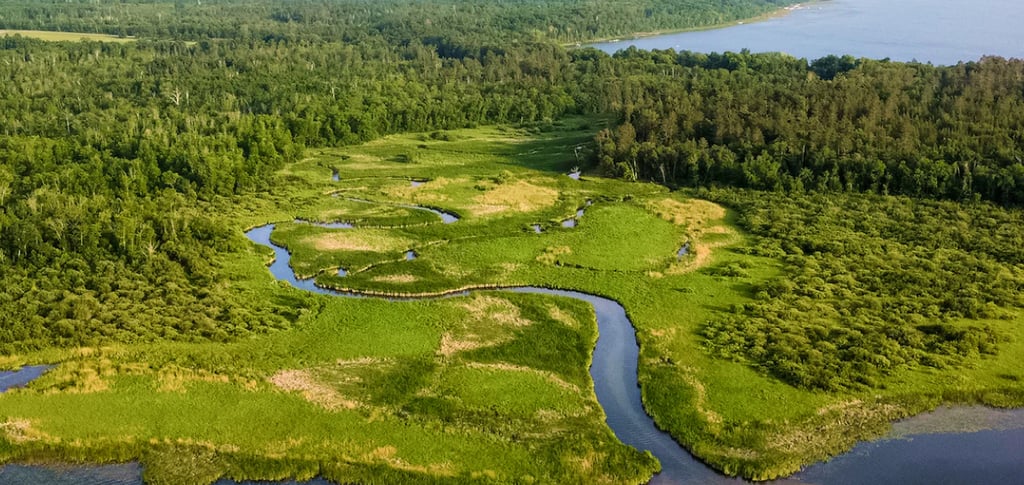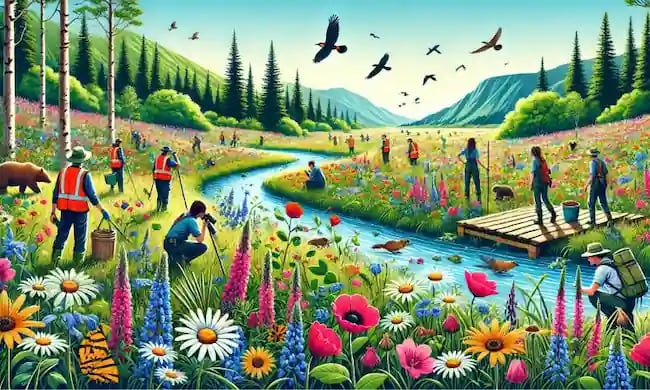A Introduction to Rewilding
ENVIRONMENTAL ISSUES
Danny Xu
7/31/20253 min read


As people are caught up in destroying nature in activities like deforestation, the Earth loses the proper balance between nature and infrastructure. As the world continues to suffer from events caused by humans, such as global warming, biodiversity loss, and habitat destruction, some people have realized that rewilding is an excellent way to reconnect society with nature and combat these environmental issues. Humans have taken and damaged nature enough, and it is time to repay what is owed.
What is Rewilding?
As the name suggests, rewilding is a nature restoration process that involves any action that allows plants, animals, and natural ecosystems to return to areas without harmful human intervention. Plants spread their seeds, create food and homes for animals, and provide clean air and water. Animals have the power to invent systems, such as carnivores eating herbivores to prevent overgrazing, or beavers building dams that create wetlands, which provide homes for other animals. When harmful human actions are not involved, nature can rebalance itself over time; however, sometimes humans must provide a starting point for rewilding, which is an initiative for some, such as reintroducing animals to their former habitats.
Rewilding Initiatives


Specifically, people are providing the starting point to rewilding in three main ways: habitat restoration, species restoration, and ecological management. For habitat restoration, people often replant native plants, removing invasive species, restoring water sources, and anything else that can help a damaged habitat have the building blocks to restore itself to its natural state.
Species restoration can be a part of habitat restoration as sometimes the way to help endangered animals is to rebuild their homes to allow them to thrive again in familiar ground. Breeding in safer spaces like zoos before releasing animals out into the wild is also a common approach to increase the population of a certain animal to prevent hunting and ensure safety before sending them back out.
Ecological management is a term that involves species and habitat restoration but also includes observing the status of the animals and surrounding habitat to guarantee wellbeing. People are more involved and "guide" the ecosystem to safety.
Here are some examples of specific rewilding attempts:
1. In the UK beavers used to be a common animal, however, their fur was highly valued and so they were excessively hunted. Since 2021, the UK has made efforts to reintroduce beavers to their old habitats as it not only promotes biodiversity but beavers also significantly impact the environment. (Read more here https://www.greenactions4earth.org/animals-that-help-combat-climate-change)
2.Yellowstone National Park used to have many wolves, however, they have been killed by humans which created an imbalance in the food chain for the rest of the animals there. As talked about before, this destroys the balance between plants, herbivores, and carnivores necessary for an ecosystem to thrive. In 1990, wolves started being brought back to the park, which allowed more plants to grow and gave homes for more animals to move into.
3.Water buffalo used to be common in Eastern Europe however they were wiped out due to more human action. However, water buffalo create puddles and pools for smaller animals to live in like fish and they spread out a lot of plant seeds. In May 2021, some water buffalo were released back into a island to improve the biodiversity.
